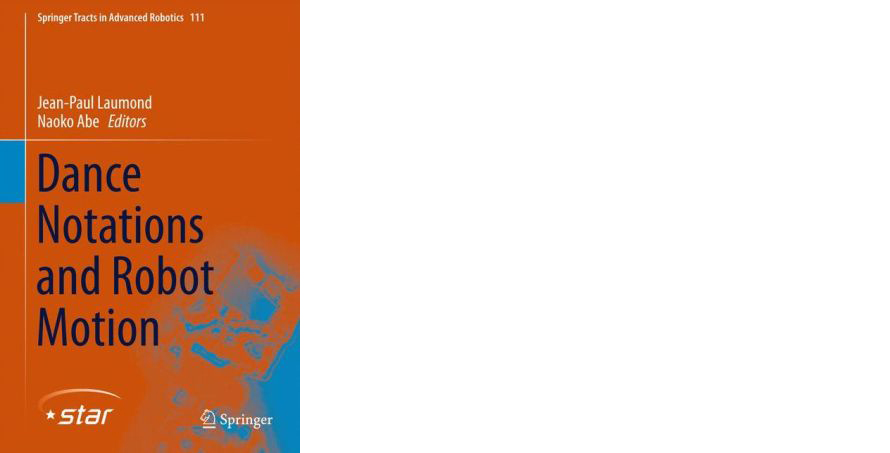05.01.2016
Springer’s paper
“Towards Behavioral Objects: A Twofold Approach for a System of Notation to Design and Implement Behaviors in Non-anthropomorphic Robotic Artifacts”
Samuel Bianchini, Florent Levillain, Emanuele Quinz, Armando Meniccaci, Elisabetta Zibetti
in:
Dance Notations and Robot Motion
Jean-Paul Laumond, Naoko Abe (Eds.)
Springer Tracts in Advanced Robotics
© 2016
How and why to write a movement? Who is the writer? Who is the reader? They may be choreographers working with dancers. They may be roboticists programming robots. They may be artists designing cartoons in computer animation. In all such fields the purpose is to express an intention about a dance, a specific motion or an action to perform, in terms of intelligible sequences of elementary movements, as a music score that would be devoted to motion representation. Unfortunately there is no universal language to write a motion. Motion languages live together in a Babel tower populated by biomechanists, dance notators, neuroscientists, computer scientists, choreographers, roboticists. Each community handles its own concepts and speaks its own language.
The book accounts for this diversity. Its origin is a unique workshop held at LAAS-CNRS in Toulouse in 2014.
Worldwide representatives of various communities met there. Their challenge was to reach a mutual understanding allowing a choreographer to access robotics concepts, or a computer scientist to understand the subtleties of dance notation. The liveliness of this multidisciplinary meeting is reflected by the book thank to the willingness of authors to share their own experiences with others
